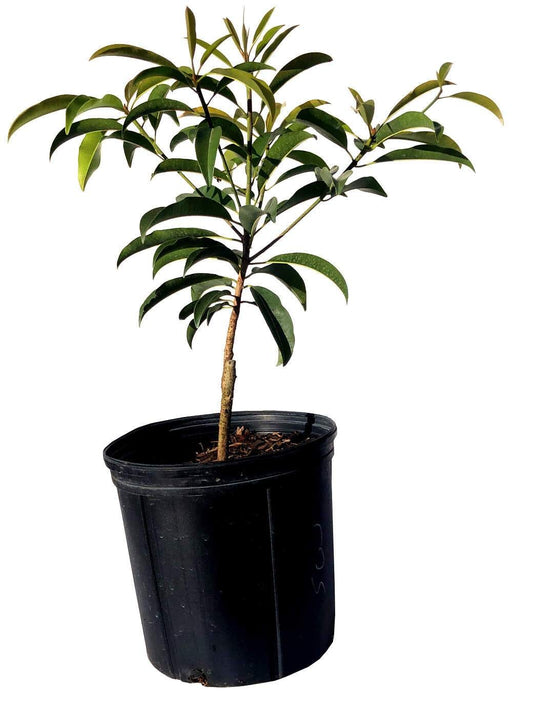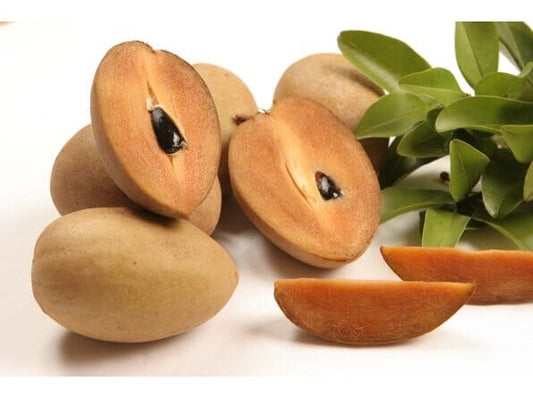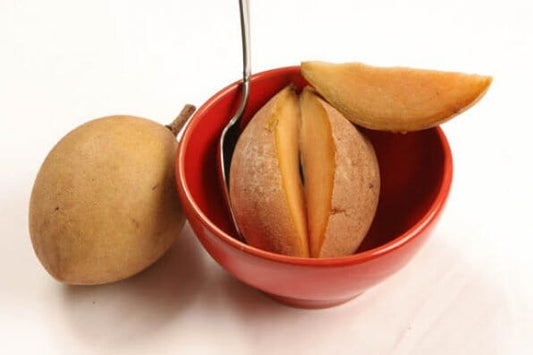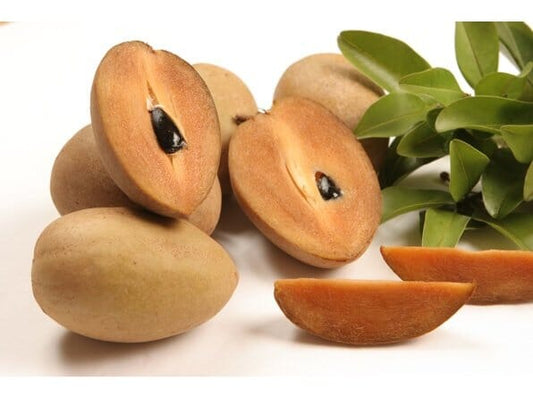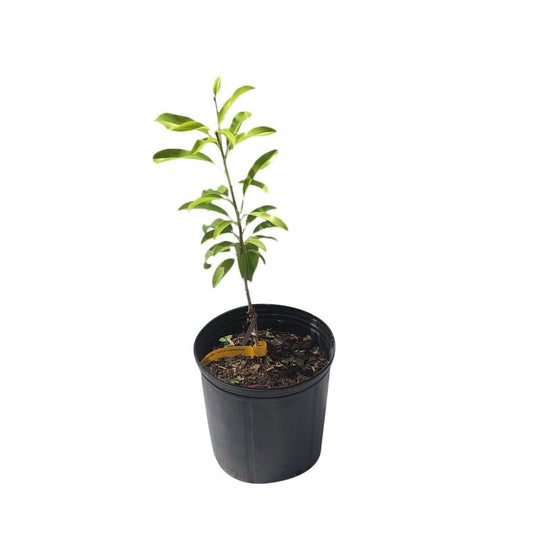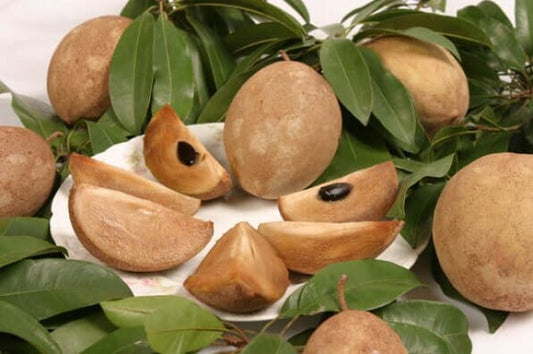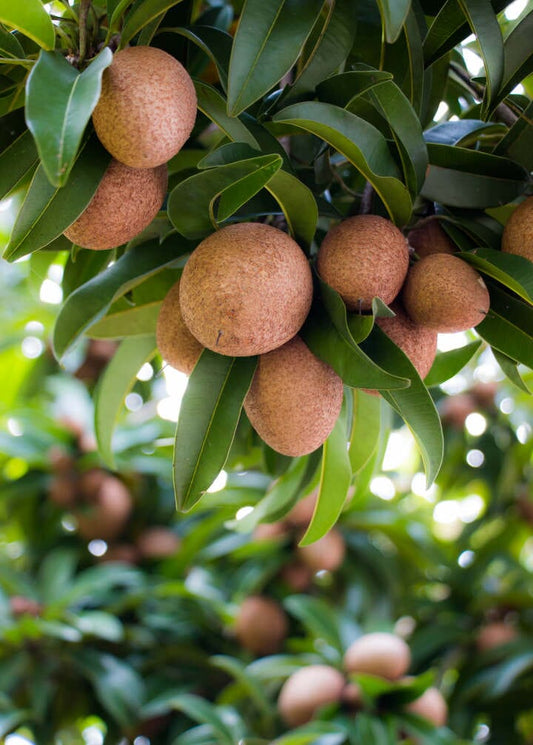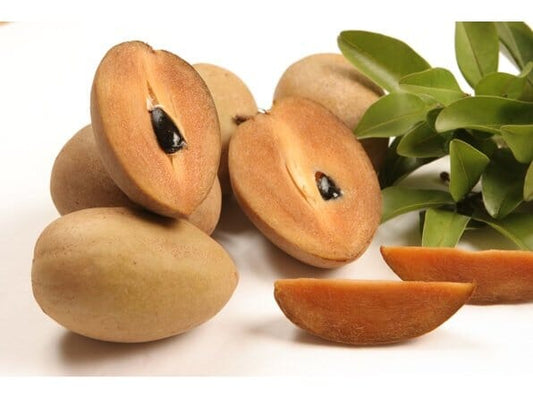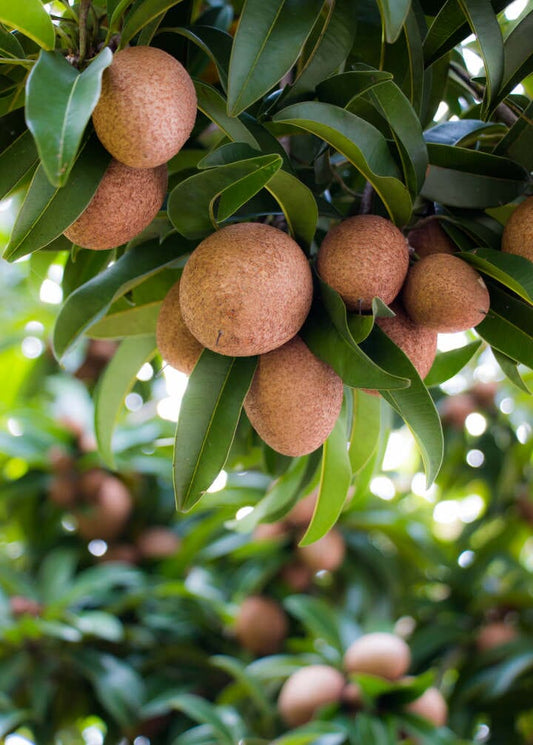Sapodilla Fruit
Discover the Sweet World of Sapodilla (Níspero): Flavor, Benefits & Tree Varieties
Whether you're a fruit lover or gardener, the sapodilla (nispero) offers a unique blend of flavor, health, and tropical charm. In this collection, you'll explore its delicious fruit, nutritional gifts, and the 11 exclusive tree varieties we offer, each perfect for your home orchard or garden.
What Is Sapodilla (Níspero) & Why It’s So Special
Sapodilla, also known as nispero or chiku, is a tropical evergreen native to southern Mexico and Central America. The ripe fruit is soft and grainy, with a malty, brown-sugar-pear flavor that delights every palate. People eat it fresh, scoop it like ice cream, blend it into milkshakes, or craft custards and jams.
This remarkable tropical tree belongs to the same family that historically provided chewing gum through its milky latex. The ripe fruit features light brown to reddish brown skin when fully mature, revealing sweet flesh inside with one to six seeds that should never be eaten.
Health Benefits & Nutritional Powerhouse
Sapodilla fruit packs incredible nutritional value. Rich in fiber, vitamin C, copper, and antioxidants like polyphenols and tannins, it supports digestion, immunity, and overall wellness. Traditional medicine uses its fruit, seeds, leaves, and bark to soothe digestive issues, coughs, inflammation, and even anxiety. Don’t forget, though, the seeds have tiny hooks and should not be eaten.
Growing Sapodilla: Trees, Grafting & Care Tips
Most commercial varieties are grafted, so you get consistent fruit quality and faster yields (typically fruiting in 2-5 years, vs. 5-8 from seed). Sapodilla thrives in warm climates, tolerates drought, but needs protection from frost and heavy watering when young.
Many gardeners ask about pollination and fruit setting. While some trees self-pollinate, others benefit from hand pollination, especially if flowers wither without fruit.
Meet Our 11 Sapodilla Tree Varieties
Browse our sapodilla collection, each with unique traits, flavors, and growth habits.
Most popular varieties
Alano Sapodilla Nispero Tree Grafted: Known for its smooth texture and brown-sugar flavor, Alano is a reliable producer with medium-sized fruit and excellent shelf life.
Silas Woods Sapodilla Nispero Dwarf Tree Grafted: A compact, dwarf variety perfect for small gardens and containers. Produces exceptionally sweet, caramel-like fruit and starts fruiting early.
Brown Sugar Sapodilla Nispero Tree Grafted: True to its name, this variety offers an intense brown-sugar sweetness and soft, juicy flesh. Great for fresh eating and desserts.
Specialty Selections
Butterscotch Sapodilla Nispero Tree Grafted: Unique caramel-butter flavor that’s truly dessert-like. Small to medium fruit size with a melt-in-your-mouth texture.
Morena Sapodilla Nispero Tree Grafted: Large, oval fruit with rich, sweet pulp and a pleasant aroma. High-yielding and well-suited for warm climates.
Hasya Sapodilla Nispero Tree Grafted: Produces some of the largest sapodilla fruits, with a sweet, malty taste. A favorite for commercial and home growers alike.
Traditional Options
Tikal Sapodilla Nispero Tree Grafted: Offers a perfect balance of sweetness and firmness. Tikal trees are dependable and fruit generously throughout the season.
Sapodilla Nispero Makok Tree: A classic heritage variety with a dense, sweet pulp. Ideal for traditional nispero lovers and those seeking a regular-sized tree.
Alano Sapodilla Nispero Tree Air Layered: Same beloved Alano flavor in a tree grown by air layering. Great for quick establishment and early fruiting.
Sapodilla Nispero OX Tree Grafted: Rare variety with a distinctive sweet taste and firm texture. A conversation starter in any tropical fruit collection.
Molix Nispero Tree Grafted: Produces medium to large fruit with excellent sweetness, smooth texture, and a rich, aromatic flavor.
Why Choose Grafted Sapodilla Trees for Fruit Production?
Grafted sapodilla trees offer significant advantages over seedlings:
-
Faster fruit production - typically bear fruit in 2-3 years vs 5-7 years for seedlings
-
Guaranteed variety characteristics - exact flavor and quality you expect
-
Improved disease resistance - stronger root systems prevent severely damaged plants
-
Consistent fruit quality - reliable harvests of sweet edible fruit year after year
Growing Success in Tropical and Subtropical Climates
Our Florida-grown sapodilla trees adapt well to USDA zones 9-11, thriving in well drained soil with full sun exposure. These tropical tree varieties tolerate temperatures from 25°F to 100°F, making them versatile for subtropical plant enthusiasts.
When flowers appear, most varieties self-pollinate, though hand pollination can increase fruit yields. The bell like flowers develop into fruit that changes from green to light brown or dark brown when ripe.
Harvesting and Enjoying Your Sapodilla Fruit
-
Ripen it: Let it sit at room temperature until soft and fragrant. Scratch the skin lightly, green means unripe, yellow/brown indicates readiness.
-
Eat it: Slice, scoop, discard seeds, and enjoy. Freeze pulp for smoothies or desserts.
-
Get creative: Add it to shakes, pies, crumbles, custards, or savor it solo at its sweetest.
The Everglades Farm Difference
Each sapodilla fruit in our collection is carefully grown in Florida's ideal tropical climate, ensuring healthy, vigorous plants ready for your garden. Our grafted varieties come from proven parent trees with outstanding fruit quality records.
Whether you're seeking compact varieties for small box gardens or traditional fruit trees for large box orchards, our collection offers something special for every tropical fruit enthusiast ready to bear fruit in their own backyard paradise.

